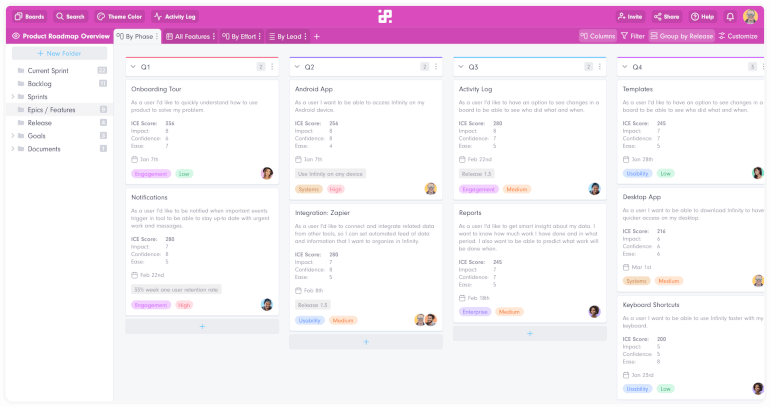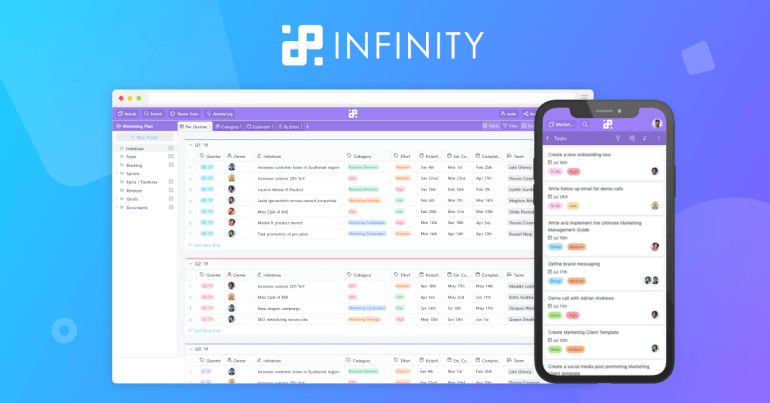10 Actionable Tips on How to Manage a Remote Team
Buffer’s State of Remote Work 2020 study claims that 98% of remote workers want to work remotely for the rest of their careers, and over 50% of remote workers are fully remote (without an option to work in an office).
With this statistic in mind, it's safe to say that remote working is a growing trend that will definitely continue rising, especially since remote workers are beginning to work some of the best jobs in the world of technology. Plus, given the recent developments in remote communication tools, it has become easier for modern workforces to accommodate remote working arrangements.
However, it’s not just technological changes that have made remote working more popular. As more people started discovering remote work, offering this option to employees has given a number of employers a competitive advantage in hiring. Indeed, businesses that offer remote working are able to attract the best professionals who may be unable or unwilling to relocate for a job offer.
One of the key challenges you’ll need to face first is defining the way you manage remote workers. In order to successfully manage a remote team, there are a number of nuances you need to account for and challenges to overcome not present in physical workforces.
In the remote work culture, managers in an office don't have to walk far to get in touch with an employee and engage in a conversation about their work. And thanks to the recent change in events, people who didn’t have any experience in remote work are forced to rapidly learn those nuances, and learn how to embrace everything that remote working brings without bringing any damage to the business.
This post will help you learn how you can effectively start working with remote employees, so that you can build a sustainable remote workforce.
How to Manage a Remote Team in 2020
1. Trust Your Employees
Trust is one of the most important aspects of remote work. In an office, it is easy to detect if someone is not working (if YouTube is on in the background of an employee’s computer, it is clear they are not being fully productive). However, it is more difficult to assess whether someone has been working if they are not in the office.
Thus, when you’re managing a remote team, it’s important that you are able to trust every employee to do their job. When given the opportunity to work remotely, your best employees will see it as an investment in them, and they will understand the duties and responsibilities they have as employees.
However, if you try to micromanage employees or otherwise show you do not trust them working remotely, it can make workers feel undervalued or as if you are doubting their intentions. As you work with a remote team, remember to trust and build good relationships with them.
2. Set Good Expectations
To avoid remote workers staying idle or being unproductive throughout their working day, it is crucial that you set the right expectations from day one. In fact, a remote worker should have a clear sense of what you expect from them from the get go.
These expectations should be split into a few categories.
What you want to define first is when you want your remote team members to be available and working. What working hours should they have? When should they be available? Do you want to impose “core hours” in which all employees are available to chat? Is it a good idea to ‘switch’ from the office to remote working hours?
Setting these expectations early will ensure both you and your employees are all on the same page.
Your business should also completely adapt to the situation and set clear expectations around workload. While it may seem as though remote employees can work all day every day, that is simply not the case.
If you push remote workers to do more just because there is no obvious distinction between their office and home, employees will burn out and feel less motivated. When someone starts working remotely, make sure to clearly communicate what work should be done and discuss what should happen if there is a priority that requires them to work longer than they expected.
3. Set Smart and Measurable Goals

If you’re planning to implement remote working only for a while, set short-term and mid-term goals for each department (or even each remote worker). In case you’re planning to introduce a new culture of remote working as a regular part of your business, think about setting mid-term and long-term goals.
In traditional offices, setting day-to-day goals is a common form of management—these goals make it clear to everyone what they need to accomplish and when. However, when you’re managing remote workers, this approach does not work as well.
When managers set day-to-day goals for their employees, these same employees may feel they are being micromanaged, which can impact employee morale.
And whether you’re incorporating short-term or long-term remote work culture into your business, micromanaging and over should not be the case.
Don’t emphasize the change that has occurred, but rather keep encouraging your employees to look at the bigger picture. Motivate them to focus on weekly and monthly accomplishments, and step-by-step progress that is convenient to track for both you and your remote workers.
When you start a new project, make sure your remote employees are fully aware of the work that needs to be done and involve them in the timeline process. One day, a remote developer may decide they can work longer and thus advance the project more; another day a remote developer may have other priorities that come first. The clearer you are about goals and milestones, the easier it will be for everyone to get on the same page about what work needs to be done and when.
4. Use the Right Tools
Over the last few years, a wide number of collaboration tools have emerged that are meant to help remote teams work better. From project management to online communication, these tools comprise the de facto toolkit for remote workers.
A flexible, yet intuitive and easy-to-adapt system which will help your team stay on top of everything that is being done is literally essential in these situations. Keeping track of who’s doing what, important milestones, and the results your team members bring are just some of the tasks you should always have easy access to.
One such tool is Infinity, which provides you with the fundamental features and functionalities that allow you to quickly, easily and effectively create a custom work management system according to your needs, work/methodologies, or work ethic.

With Infinity, you can create any type of process, organization or workflow that each team member will easily learn, understand and work in on a daily basis.
As remote workers cannot just walk up to your desk if they have a question, they are more dependent on having the right technological infrastructure in place.
Before you manage remote workers, make sure you set up clear channels of communication. In addition to a work management platform, you may want to use Slack for office communication and emails for the official communication. Then, make sure that every remote worker is clear on what tools they should use and when.
The more time you spend thinking about which tools to use—and implementing them correctly—the less likely there’s going to be a communication hiccup which causes your remote workers to lose track of their priorities.
5. Communicate Often

Communication is one of the most important parts of maintaining a motivated remote team. Communicating often with your employees will give them peace of mind that they are working on the right projects, and will also make them feel like part of the team. What’s more, communicating often ensures that you have all the information you need about an employee’s workload, so you know what work to assign in the future.
You should communicate daily with your remote team, even if it is just for a quick chat about priorities and deadlines. You may also want to try out daily stand-ups where employees submit a quick progress update and you respond with your thoughts, or you may want to do a weekly review with each employee. Whatever you do, make sure that you are communicating as much as possible with your remote team.
6. Accept That Everyone Works Differently
When working remotely, each team member will have a unique work ethic, working time preferences, daily responsibilities, etc. which is something that you should always have respect for.
Additionally, if you are working with remote employees from all around the world—or even just in different timezones in your country—then it’s important to be aware of the different times in which each employee will be available.
No employee wants to have a weekly meeting scheduled at 8PM which could go on for hours. When you onboard a remote employee, take note of their schedule and make sure you take it into consideration when booking calls. If you have employees who need to take later meetings, try to alternate between later and earlier meetings.
Having employees working in different time zones comes with its challenges, but it also has a number of benefits. Perhaps the most notable benefit is that when you have employees working while you are asleep, you will have work that you can review while your employees sleep. So, by the time they wake up, they’ll be able to see your comments on their work.
7. Make Your Team Members Feel Included
It’s easy to take for granted how working in the same physical space promotes a sense of inclusion. When every employee is in an office, they all share something: they have travelled to this one place to get work done. During the day, they can communicate with people in-person, have lunch together, and generally see other people working around them who are all part of the same team.
However, when working remotely, people are usually restricted to their homes only. This can easily lead to loneliness, boredom, depression and feeling unmotivated to finish their tasks and commit to remote working properly. Needless to say, this makes it more difficult for them to feel part of a team, even if they are chatting frequently with other employees via Slack or another communication tool.
When you are managing remote employees, always keep in mind that even though they are in a different place, they are still part of the team. This means that if there is an impromptu meeting, you should try to include them; if a worker has a good idea at the office, it should be added to Slack; if it is someone’s birthday and a cake is brought in, offer to pay for each remote worker’s next coffee.
The more you do to include people in everything that happens at your business, the more likely they are to feel like part of the team.
8. Embrace Cultural Differences
Remote working enables businesses to improve their diversity. However, with this increased diversity comes a responsibility to embrace the individual lives and habits and work cultures of each employee.
When you are building a remote team, you should get to know the habits and everyday tasks of each employee who works for your business.This will result in more of a personal connection between the members which will definitely spark joy and leave them feeling more motivated to keep committed to their work.
If you’re thinking about implementing remote working long-term and hiring remote employees across the world, you’ll also deal with cultural differences.
A developer based in China, for example, may be used to working more than someone in Finland. A senior developer in the USA will want to take the 4th of July as a holiday, whereas a senior developer based in Canada may want to take Canada Day as a holiday.
Spend some time reading about business practices in their countries and talk with your employees about their personal attitudes toward work.
9. Create Good Feedback Loops

Even if you communicate actively with your remote workers, there is still a chance that they will find it difficult to evaluate their own work. There’s a possibility that they might feel as they are not given enough opportunities to discuss their work with you one-on-one.
Building a remote team involves deliberately planning how workers should receive feedback. For instance, you may decide to set up a review meeting each week to chat with a subset of remote workers on a team, or have a weekly one-on-one conversation with each employee.
You may also decide that you want to review the work of different employees at different times so that they can get feedback when they need it most. Overall, you should make sure that employees find it easy to receive feedback and evaluate their own work.
10. Facilitate and Consider Suggestions
Every organization develops different policies for remote working. The most successful ones ask for feedback in order to iterate on their policies over time.
As you start working with your remote team, don't forget to ask for advice on how you can improve the working environment. In addition, you should also make it easy for people to submit feedback when they have a suggestion. Create an anonymous feedback form for remote workers to submit ideas, or have weekly 30-minute calls to discuss remote procedures.
Should you be checking in more often? Are you checking in too much? Do remote workers find it difficult to chat if six people are in a conference room and there are only two remote workers calling in?
These are all questions you can only answer by talking with your remote workers and facilitating feedback. Also, remember that what works today may not work next year. If remote workers think a change is needed, consider their suggestion irrespective of when you last reviewed your communication procedures.
Final Thoughts
As you can see, being managing a remote team is not easy, especially if you have to switch to remote working rapidly and without enough time to plan or create the strategy to do so.
Every day will bring new challenges—from revising communications policies to dealing with tracking everyone’s work, and keeping everyone synced and updated with the mutual goals and ongoing events.
However, the fact remains that more and more highly-skilled developers, marketers, business analysts and salespeople are switching to remote and are embracing everything that remote work brings.
So, if you've been thinking about going fully remote, now might be a good time. You can also give some idea to implementing special training sessions in order to give more flexibility to your employees and be prepared for situations in which you are made to switch to remote working.
Aside from that, giving your employees more flexibility, not restricting them to a single place only, allowing them to travel a bit more and show their own, unique work ethic will definitely result in a huge spike in productivity and morale. With the right approach, you can successfully build a remote team that has clear goals and expectations and communicates well with each other.
Hopefully, with these tips you'll have an easier time managing a remote time, and one final piece of advice from us to you is this: always be flexible and open to change.
Thank you, Artur, from CareerKarma.








